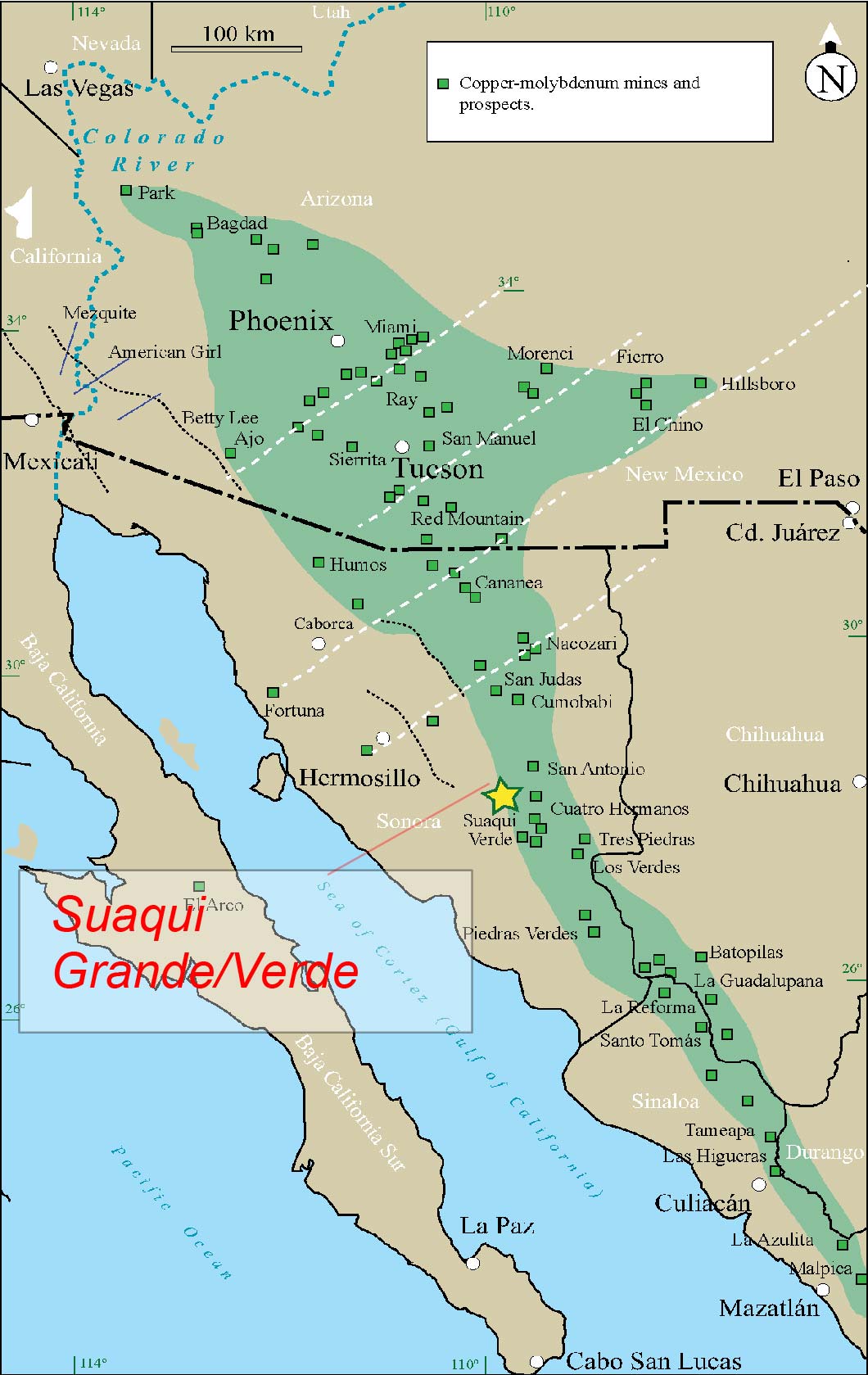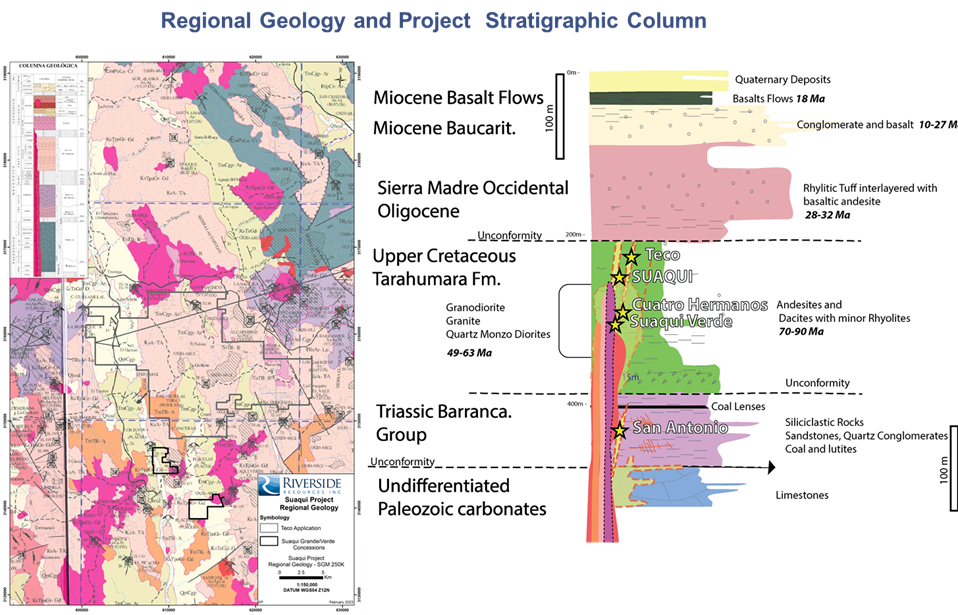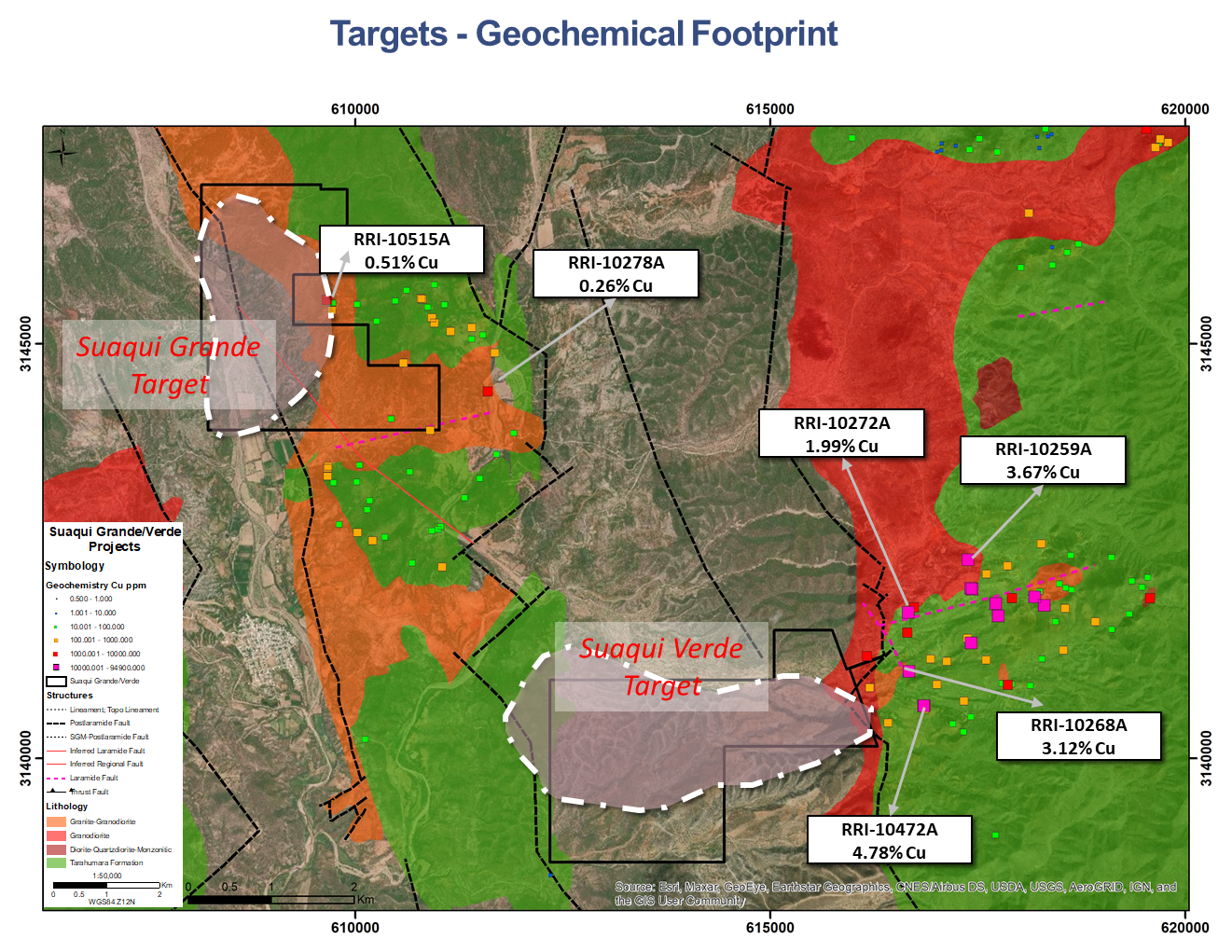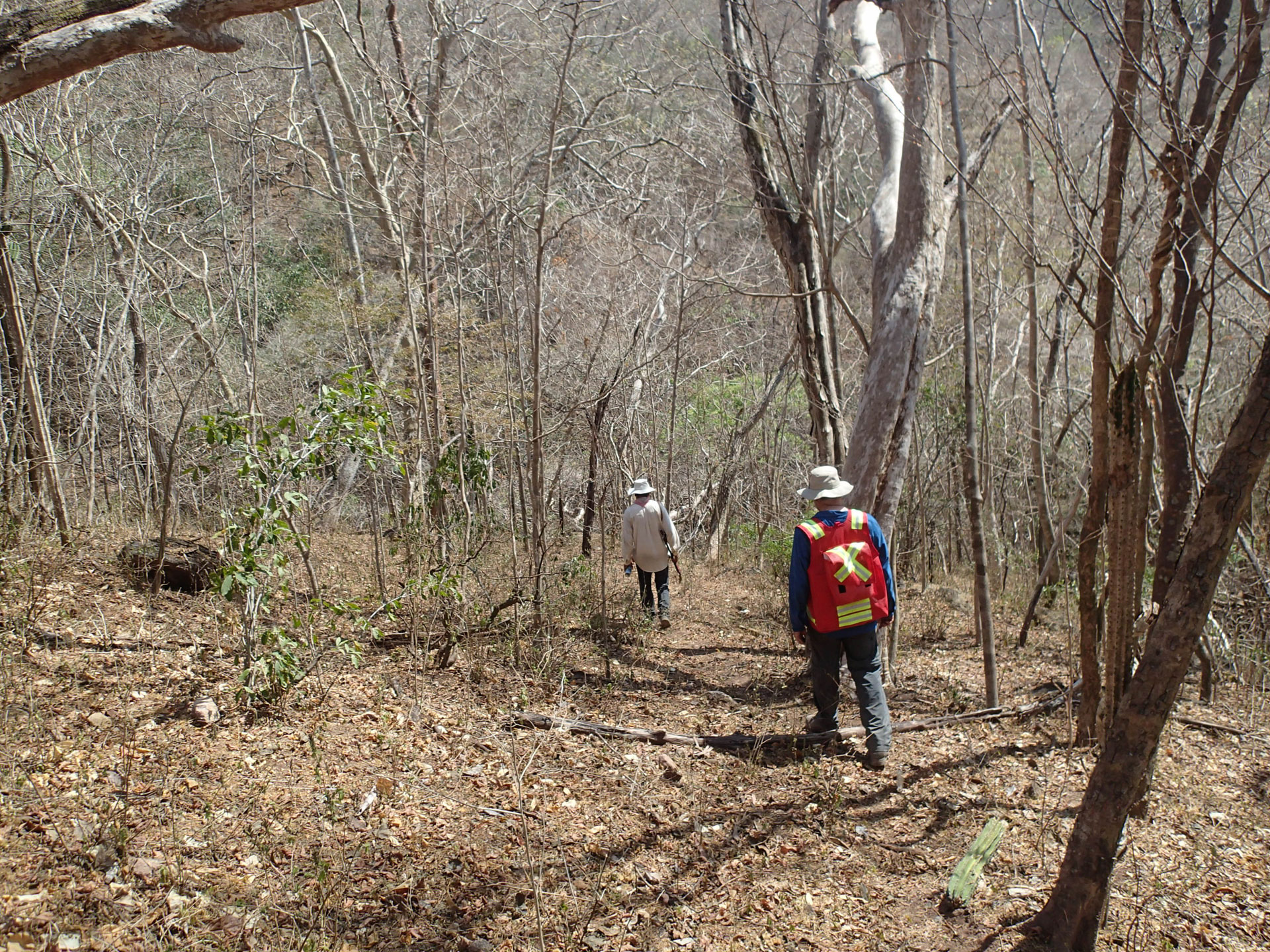OVERVIEW
| Commodity: | Au |
| Deposit Type: | Porphyry Cu |
| Location: | Sonora, Mexico |
| Size: | 800 hectares |
| Status: | Available for Option |
The Suaqui Grande Copper Project is located in the mineral-rich central copper belt of Sonora, Mexico, approximately 130 km southeast of the city of Hermosillo and just 3 km northeast of the town of Suaqui Grande. Suaqui is south of the La Caridad copper operations of Grupo Mexico and north of the copper operations at Piedras Verdes Copper Mine. The production in the copper belt is of a large production scale and Suaqui is another copper rich region with near by other deposits like Cuatro Hermanos which has large copper resources as well. The property spans 800 hectares and has had 4 drill holes with two hitting copper mineralization and the area is wide open for expansion with favorable geologic classic porphyry features.
Strategically positioned within the Laramide Copper-Molybdenum Belt, a prolific geological province that extends across Arizona and Sonora. The project lies within a well-established Cu-Mo porphyry cluster making Suaqui a solid exploration target and potential new significant copper discovery. This metallogenic corridor hosts several deposits, including:
- Cuatro Hermanos-large known drilled out copper resource with Cu and Mo
- Piedras Verdes Copper Mine- operating for over 20 years and strong long term copper leach, copper oxides and extensive mineralization
- Cervantes Project – a Au-Cu system with porphyry veins
- San Antonio Project – with defined resources of approximately 544,000 oz Au and 1.76 million oz Ag over a copper system of Laramide age
- San Javier Project – a Cu-focused system with high grade breccia pipes
- El Creston Project – containing reported resources of 118 million lbs of Mo and 89.4 million lbs of Cu
The Suaqui area has a strong and diverse history of mineral extraction. Early mining activities by the Spanish targeted copper, gold, and silver, while indigenous populations historically utilized magnetite and red iron oxide pigments sourced from the region’s surface outcrops. More recently high grade copper was produced from oxide bodies and now the area is in operation for the copper and gold found near the project area.
The combination of favorable geology, historical mining activity, and proximity to multiple advanced-stage mineral projects positions the Suaqui Grande Copper Project as a compelling exploration target within Sonora’s emerging porphyry belt.
HISTORY
| 1800'S | Underground mining for turquoise and placer gold |
| 1900's | Placer gold mining and copper prospecting, small adits, exotic copper |
| 1980's | Drilling of the supergene green copper zone and delineation of copper mineralization across the district |
| 1990's | Magma Copper Company, Kennecott, and other companies conducted drilling campaigns that resulted in copper discoveries across more than four areas within the district |
| 2000's | Suaqui Grande Project 100% owned by Riverside, was subject to scout drilling by Rio Tinto / Kennecott which encountered copper mineralization |
| 2019 | Riverside acquired the tenure as part of a district consolidation effort, settling outstanding taxes and addressing all regulatory requirements. The property is now turn-key and ready for immediate exploration |
| 2024 | Field work by Riverside has returned positive results, with favourable geology and site access supporting the potential for near-term drilling |

GEOLOGY
The lithostratigraphic units in the area include plutonic, volcanic, and sedimentary rocks ranging in age from the Upper Cretaceous to the Recent. The Upper Cretaceous is represented by the Tarahumara Formation (Wilson and Rocha, 1946), and consists of andesite, agglomerate, andesitic tuff with some horizons of sandstone, limestone and rock acidic such as trachyte, trachyandesite and dacite. These units form part of the volcanic and volcano-sedimentary sequences that make up the Western Sierra Madre volcanic complex.
From the Upper Cretaceous to the Oligocene, these pre-existing rocks were intruded by plutonic bodies of granitic, granodioritic, and dioritic composition.
The Miocene Middle is represented by conglomerate-sandstone and conglomerate-rhyolitic tuff of the Báucarit Formation (King, 1939), these rocks represent a sedimentation linked to the Tertiary distension of the Basin and Range and are represented by polymictic conglomerate and sandstone filling tertiary basins concordantly overlying the Báucarit Formation are flows of rhyolitic tuff, andesite, latite, basaltic andesite, basalt and tuffaceous sandstones, Miocene age of the Lista Blanca Formation (Dumble, 1900).
During the Pleistocene, poorly consolidated detrital conglomerates were deposited, consisting of polymictic material. In the Recent period, slope and alluvial sediments, including gravel, sand, and silt were deposited across the area




